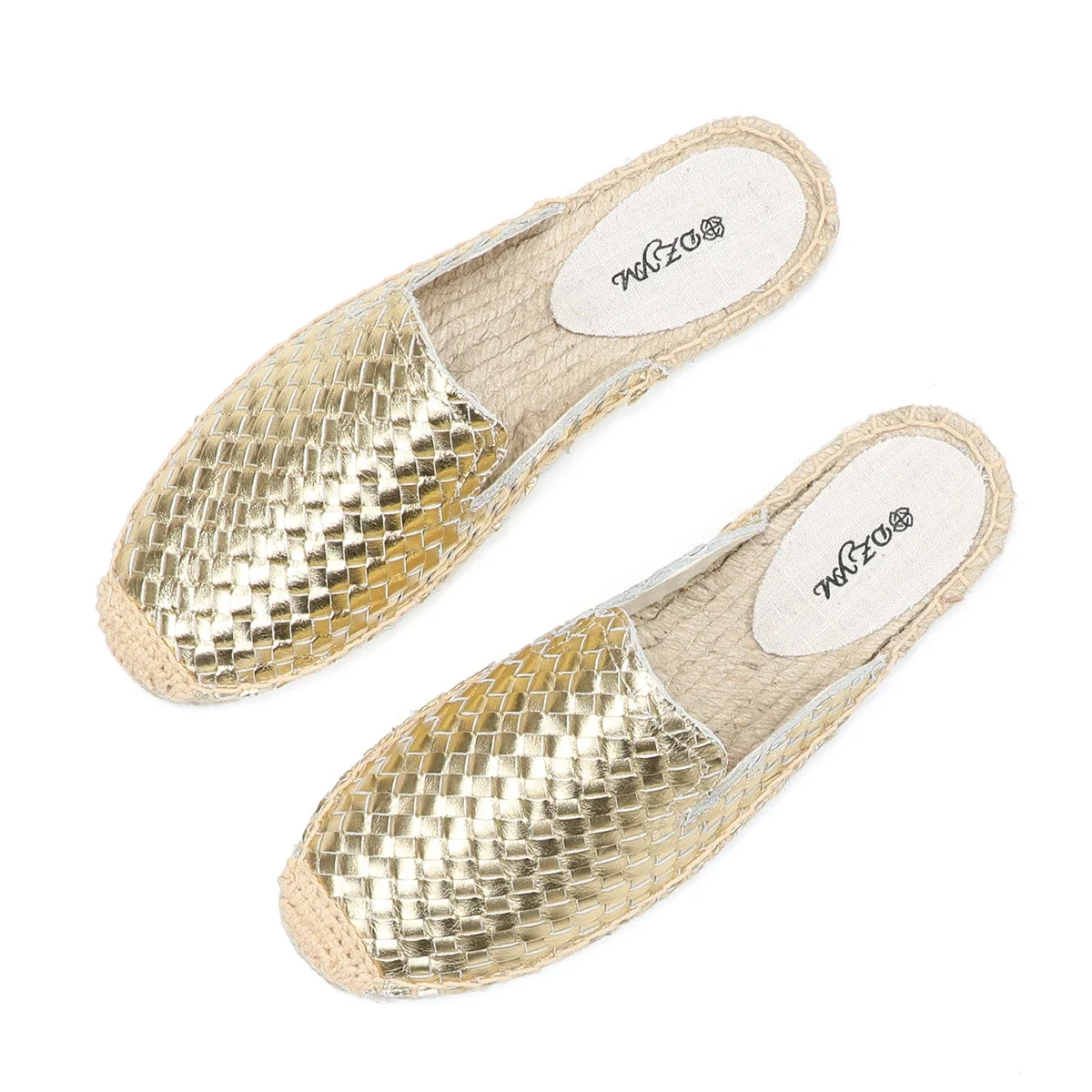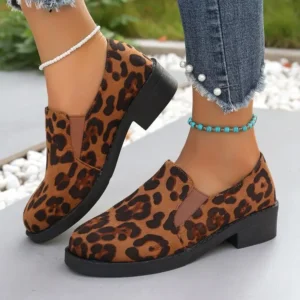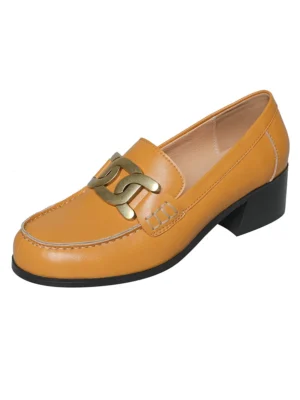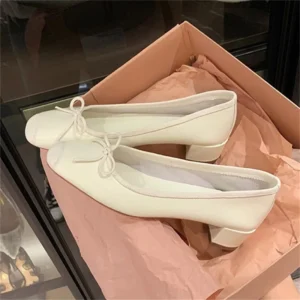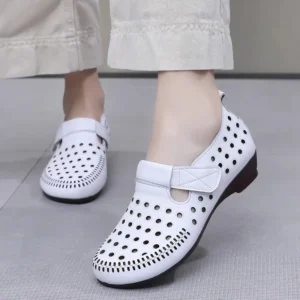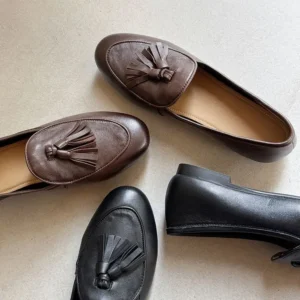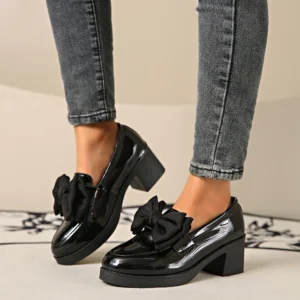Introduction: Understanding Professional Footwear Choices
The footwear you choose for work does more than just complete your outfit—it makes a statement about your professional identity while impacting your comfort throughout the workday. Many professionals face the daily dilemma of selecting shoes that balance style, comfort, and workplace appropriateness. At the center of this decision often lies the choice between classic loafers and traditional heels.
Your footwear selection significantly influences how others perceive you in the workplace while directly affecting your productivity and comfort. Uncomfortable shoes can distract you from important tasks, while the right pair can provide confidence and support throughout demanding workdays.
Loafers and heels both have rich histories in professional settings. Loafers, once considered primarily casual footwear, have evolved into acceptable and even preferred options in many professional environments. Heels, with their longstanding association with formal business attire, continue to be staples in many industries despite changing workplace norms.
In this guide, we’ll explore:
– The key factors that should influence your work footwear choices
– Detailed comparisons between loafers and heels for professional settings
– How to style both options across different work environments
– Strategies for maximizing comfort without sacrificing style
As workplace dress codes continue to evolve, understanding how to navigate professional office loafer outfits and traditional heel options becomes increasingly valuable for the modern professional.
Key Factors to Consider When Choosing Work Footwear
Before diving into the specifics of loafers versus heels, it’s important to understand the key considerations that should guide your professional footwear decisions.
Your workplace environment plays a crucial role in determining appropriate footwear. Corporate settings often have stricter dress codes than creative or tech industries. Similarly, client-facing roles may require more formal footwear compared to behind-the-scenes positions.
Job requirements significantly impact what shoes make sense for your workday. Consider:
– How much time you spend standing or walking
– Whether you frequently travel between meetings
– If you need to quickly transition between different environments
– The impression you need to make in your specific role
Personal comfort needs vary widely, with factors like foot width, arch height, and existing foot conditions all affecting which styles will work best for you. Studies show that employees who wear comfortable shoes report higher productivity levels and fewer distractions throughout the day.
Weather and seasonal factors shouldn’t be overlooked—shoes that work perfectly in summer may be impractical or unsafe during winter months. Additionally, consider how your footwear integrates with your existing professional wardrobe to maximize versatility.
The relationship between flat vs low heel comfort is particularly relevant when weighing your options, as even small differences in heel height can significantly impact your daily comfort and mobility.
Comprehensive Comparison: Loafers vs. Heels
To help you make an informed decision, here’s a side-by-side comparison of loafers and heels across key professional considerations:
| Factor | Loafers | Heels |
|---|---|---|
| All-day comfort | Generally superior, with flat or minimal heel | Varies by height; typically less comfortable for extended periods |
| Professional image | Modern professional in most settings; may be seen as casual in very traditional industries | Traditionally associated with formal professional attire |
| Versatility | Works with pants, skirts, and casual to semi-formal attire | Best with formal business attire, dresses, and tailored pieces |
| Foot health | Better support, less strain on feet and lower back | Can cause foot pain, posture issues with regular wear |
| Mobility | Easy walking, standing, and movement between locations | Limited mobility, especially with higher heels |
| Price range | $80-$300+ for quality pairs | $80-$350+ for quality pairs |
| Durability | Generally longer-lasting with proper care | May wear down faster, especially at heel points |
| Maintenance | Regular cleaning and occasional resoling | More frequent heel replacements and structure maintenance |
Both footwear options bring distinct advantages to your professional wardrobe. Loafers excel in providing all-day comfort without sacrificing style, making them ideal for jobs requiring movement or long hours. Heels continue to convey traditional professionalism and can enhance an outfit for important meetings or presentations.
Understanding how to wear loafers to the office can help you maximize their professional potential while maintaining appropriate workplace style.
The Professional Appeal of Loafers
Loafers have undergone a remarkable transformation in professional settings over the past decades. What began as casual weekend footwear has evolved into a staple of modern professional wardrobes across industries. This evolution reflects broader changes in workplace culture that increasingly value both comfort and style.
Several loafer styles are particularly well-suited for professional environments:
- Penny loafers: Classic, understated, and versatile for most business environments
- Horsebit loafers: Feature distinctive metal hardware for a more polished look
- Tassel loafers: Add subtle detail while maintaining professional appropriateness
- Monk strap loafers: Provide a more structured look that bridges casual and formal
Material choice significantly impacts how professional loafers appear. Full-grain leather in black, brown, or burgundy conveys traditional professionalism, while suede offers a more relaxed yet still sophisticated option for less formal workplaces.
Modern loafers stand out for their ability to blend comfort with professional aesthetics. Quality pairs feature cushioned insoles, arch support, and durable materials that maintain their appearance throughout the workday.
The key advantages of loafers in professional settings include:
– All-day comfort that doesn’t compromise style
– Ease of movement between different work environments
– Versatility across various outfit combinations
– Classic styling that resists trend cycles
Many professionals wonder whether loafers work in business professional settings. The answer largely depends on the specific loafer style, material quality, and your industry’s dress code expectations.
Styling Loafers for Different Work Environments
Loafers can be styled effectively across various professional settings with the right approach:
For corporate environments, pair sleek leather penny loafers with tailored pants and a crisp button-down shirt. The key is selecting polished leather styles in darker colors that complement formal business attire. When wearing loafers with suits, ensure your pants are properly hemmed to create a clean break at the shoe.
With skirts and dresses, loafers create a balanced look that’s both professional and comfortable. Mid-length pencil skirts paired with horsebit loafers offer a sophisticated option for client meetings, while A-line dresses with tassel loafers work well for everyday office wear.
In business casual settings, loafers shine with chinos or wool trousers paired with blazers. The versatility of loafers allows them to bridge the gap between casual and formal elements in your outfit.
For creative workplaces, consider suede loafers in rich colors paired with stylish trousers or dark jeans (if appropriate for your office). These environments often allow for more personal expression through footwear details like contrast stitching or unique hardware.
Seasonal adaptations are straightforward with loafers—pair with trouser socks in colder months or wear them sock-free (with appropriate invisible liners) during warmer seasons. The classic tassel loafers available at Artisan Haul offer particular versatility across seasons and professional environments.
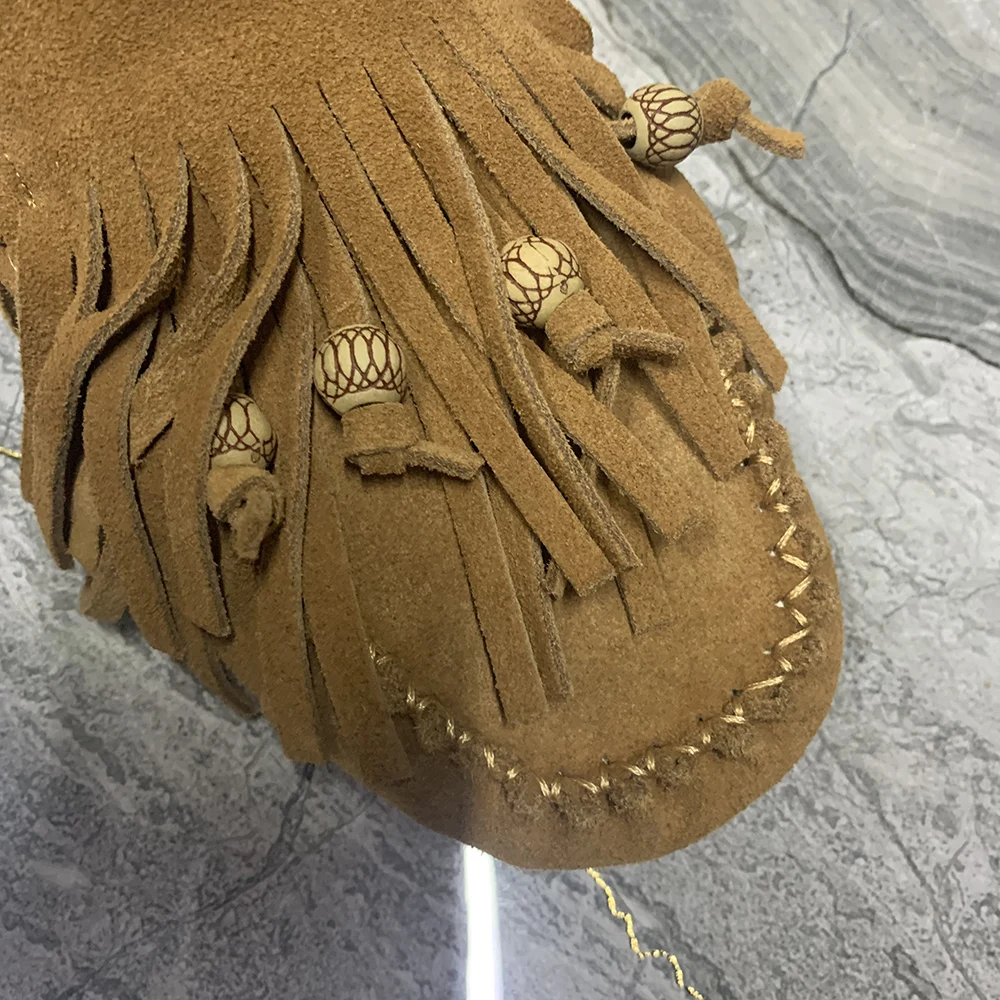
The Enduring Professional Status of Heels
Despite workplace dress codes becoming increasingly casual in many industries, heels maintain their status as a symbol of professional polish and formality. Their enduring presence in professional environments speaks to their unique ability to convey authority and elevate an outfit’s formality.
Several heel styles remain workplace staples:
– Pumps: The quintessential professional heel, especially in 2-3 inch heights
– Block heels: Offering stability and comfort while maintaining a professional silhouette
– Kitten heels: Providing a subtle height boost with maximum comfort
– Slingbacks: Adding visual interest while remaining office-appropriate
Heels contribute to professional presence not just through added height but through their effect on posture and silhouette. Research suggests that the slight posture adjustment required when wearing moderate heels can project confidence and authority in professional settings.
Material and design choices significantly impact how appropriate heels are for work. Closed-toe styles in leather or suede with minimal embellishment typically read as most professional. Traditional colors like black, navy, and nude offer maximum versatility across professional wardrobes.
Heels remain particularly advantageous in:
– Client presentations and important meetings
– Formal industry events and conferences
– Industries with traditional dress codes like finance, law, and certain consulting roles
– Situations where added height provides strategic advantage
For those seeking a middle ground, block heel loafers for business casual environments offer an excellent compromise between the formality of heels and the comfort of traditional loafers.
Styling Heels for Maximum Professional Impact
Strategic heel styling can maximize both comfort and professional impact across different workplace scenarios:
For formal business settings, classic pumps with 2-3 inch heels pair perfectly with tailored suits and structured dresses. Keep colors coordinated with your outfit for a cohesive professional look. Black leather pumps remain the most versatile option for traditional corporate environments.
When wearing heels with dresses and skirts, maintain appropriate proportions—higher heels often work better with longer hemlines in professional settings. A knee-length pencil skirt with pointed-toe pumps creates a timeless professional silhouette.
For important presentations and meetings, consider block heels that provide stability while still offering a polished appearance. The confidence that comes from knowing you can stand comfortably throughout a presentation is invaluable.
In business casual environments, experiment with more varied heel styles like slingbacks or peep-toes (where appropriate) paired with tailored separates. The relaxed nature of business casual allows for more personality in your footwear choices.
Seasonal considerations are important—suede heels work well in fall and winter, while leather options transition seamlessly across seasons. During summer months, closed-toe heels in lighter colors or fabrics offer professional appropriateness with seasonal relevance.
Artisan Haul’s women’s block heel loafers provide an excellent middle ground for those seeking the polish of heels with enhanced comfort for everyday wear.
Comfort Considerations: Finding Balance Between Style and Well-being
Finding the sweet spot between professional appearance and physical comfort isn’t just about feeling good—it directly impacts your workplace performance and long-term foot health.
Common foot issues associated with poor footwear choices include:
– Bunions and hammertoes from tight or pointed toe boxes
– Plantar fasciitis from inadequate arch support
– Back pain from improper weight distribution
– Calluses and corns from friction points
For comfortable loafers, look for these key features:
– Cushioned insoles with memory foam or gel components
– Proper arch support that matches your foot’s natural contours
– Flexible leather that molds to your foot
– Adequate toe box width to prevent compression
– Rubber or leather soles with appropriate traction
For more comfortable heels, prioritize:
– Block or wider heels for better stability and weight distribution
– Heights of 2 inches or less for everyday wear
– Cushioned footbeds to absorb impact
– Proper fit with no slippage or pinching
– Quality materials that soften and conform with wear
Podiatrists recommend alternating different footwear styles throughout the week rather than wearing the same shoe type daily. This practice allows feet to use different muscles and prevents repetitive stress patterns.
Breaking in new work shoes properly is essential—wear them around your home for short periods before committing to a full workday, and consider using moleskin or blister prevention products during the break-in period.
For those prioritizing all-day comfort, Artisan Haul’s comfortable flat loafers are designed with work-appropriate style without compromising on supportive features.
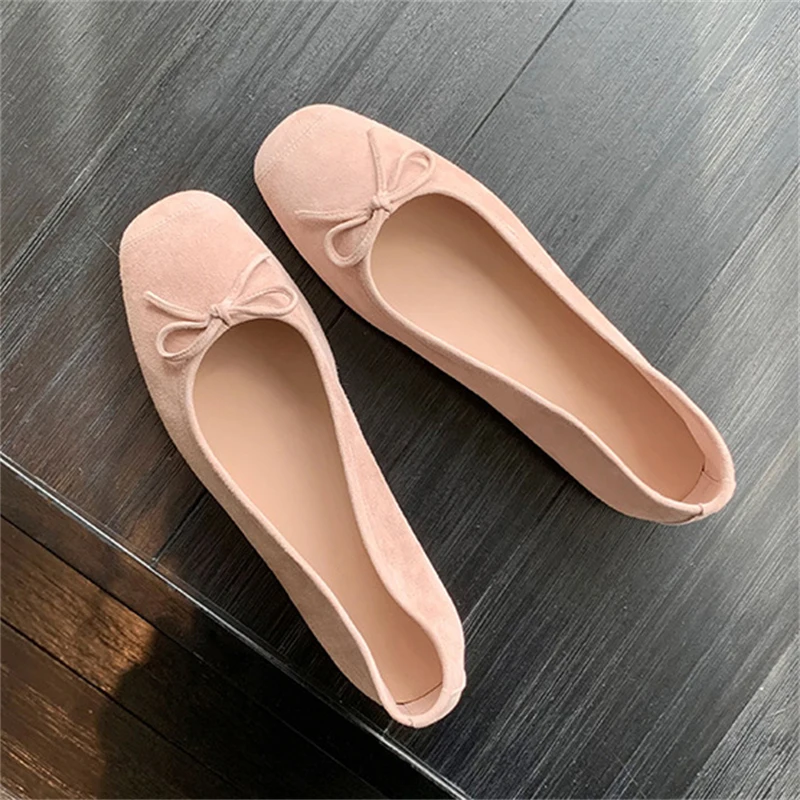
When to Choose Loafers: Workplace Scenarios
Loafers prove particularly valuable in specific workplace scenarios where comfort and practicality take precedence:
For roles requiring significant movement throughout the day, loafers provide the stability and support needed to traverse office buildings, visit multiple locations, or stand for extended periods. Sales professionals who alternate between desk work and client visits often find loafers ideal for their varied activities.
On travel days or heavy commuting days, loafers allow for easy navigation through airports, train stations, or walking city blocks while still looking pulled-together upon arrival. Their slip-on design is particularly convenient for airport security lines.
In creative or tech-focused environments with more relaxed dress codes, loafers strike the perfect balance between casual comfort and professional appearance. They signal attention to style without seeming overly formal or stuffy.
For days packed with varied activities—from desk work to client lunches to evening networking events—loafers transition seamlessly across contexts without requiring a mid-day shoe change. This versatility makes them ideal for unpredictable schedules.
Even in more formal environments, loafers can work well for “normal” office days when you’re not presenting or meeting with senior executives. The key is selecting refined styles with minimal embellishment and ensuring they’re well-maintained.
Creating business casual loafer outfits that feel both comfortable and professional is particularly straightforward—pair penny loafers with tailored pants and a quality knit for an effortlessly appropriate look.
When to Choose Heels: Workplace Scenarios
While loafers excel in many situations, there are specific professional scenarios where heels may offer strategic advantages:
For presentations to senior leadership or important clients, heels can provide a confidence boost through improved posture and traditional professional appearance. The slight height advantage may also help command attention in rooms dominated by taller individuals.
In highly traditional industries like finance, law, or certain consulting firms, heels remain an expected component of formal business attire, particularly for major client meetings or court appearances. In these settings, 2-3 inch closed-toe pumps in conservative colors remain the gold standard.
For formal corporate events like award ceremonies, important dinners, or industry galas, heels help transition your look from everyday professional to appropriately formal without requiring a complete outfit change.
During job interviews in traditional industries, classic heels signal familiarity with industry expectations and attention to professional presentation. This can be particularly important for early-career professionals establishing their professional identity.
When needing to dress more formally than your typical workday, heels instantly elevate even simple outfit components like a basic sheath dress or standard pantsuit.
For those seeking a middle ground, square heel loafers offer the elevated appearance of a heel with significantly more stability and comfort than traditional pumps—perfect for long days that still require a formal appearance.
Building a Versatile Professional Footwear Collection
Creating a well-rounded professional footwear collection allows you to dress appropriately for any work scenario while extending the life of all your shoes through rotation.
Essential loafers for a professional wardrobe include:
– Black leather penny loafers (maximum versatility)
– Brown or burgundy tassel or horsebit loafers (for business casual)
– Suede loafers in a neutral tone (for transitional seasons)
– A comfortable driving loafer for commuting or casual Fridays
Essential heels for a professional collection include:
– Black leather pumps with 2-3 inch heel (classic staple)
– Nude or tan closed-toe heels (elongates legs with skirts)
– Block heel in a versatile color (for comfort with polish)
– Dressy slingback for formal occasions (offers ventilation)
When building your collection, invest first in the shoes you’ll wear most frequently based on your specific workplace requirements. Quality markers to look for include:
– Full-grain leather uppers that will mold to your feet
– Leather linings that allow feet to breathe
– Stitched (rather than glued) soles for durability
– Reputable brands known for construction quality
– Comfort features appropriate to your foot’s needs
Proper care extends the life of professional footwear significantly. Use shoe trees to maintain shape, clean and condition leather regularly, protect suede with appropriate sprays, and have shoes professionally resoled when needed rather than replacing them entirely.
Artisan Haul’s leather flat loafers represent the kind of quality investment piece that forms the foundation of a professional footwear collection, offering years of wear with proper care.
Adapting to Modern Professional Footwear Trends
Today’s workplace footwear trends reflect broader shifts toward comfort, individuality, and practical functionality without sacrificing professional appearance. Understanding these trends helps you make footwear choices that feel both current and appropriate.
Modern professional loafer designs have evolved to include:
– Softer, more flexible constructions that require minimal breaking in
– Enhanced comfort features like memory foam insoles and arch support
– Sleeker, more tailored silhouettes that read as intentionally formal
– Subtle design details that add interest while remaining office-appropriate
Contemporary heel trends for professional settings include:
– Block and architectural heels that prioritize stability
– Lower heights (1-2 inches) for everyday wear
– Comfort-enhancing features like padded insoles and flexible materials
– Thoughtful details like elastic panels for better fit
Across both categories, we’re seeing increased emphasis on shoes that can transition from office to evening events without changes, reflecting the increasingly blurred lines between work and personal time.
Industry-specific evolution continues as well. Tech and creative fields embrace increasingly casual options, while traditional fields like law and finance maintain more formal expectations while incorporating comfort innovations.
Women's Comfortable Flat Loafers, Women's Leopard Print Loafers, Women's Low Heel Loafers
$82.50 Select options This product has multiple variants. The options may be chosen on the product pageWomen's Block Heel Loafers, Women's Heeled Penny Loafers, Women's Monk Strap Loafers
$194.04 Select options This product has multiple variants. The options may be chosen on the product pageWomen's Block Heel Loafers, Women's Square Heel Loafers, Women's Square Toe Flat Loafers
Price range: $73.61 through $86.41 Select options This product has multiple variants. The options may be chosen on the product pageWomen's Comfortable Flat Loafers, Women's Leather Flat Loafers, Women's Round Toe Flat Loafers
$124.88 Select options This product has multiple variants. The options may be chosen on the product pageWomen's Black Flat Loafers, Women's Black Penny Loafers, Women's Classic Tassel Loafers
$194.28 Select options This product has multiple variants. The options may be chosen on the product pageWomen's Black Heeled Loafers, Women's Black Platform Loafers, Women's Block Heel Loafers, Women's Chunky Heel Loafers
$72.58 Select options This product has multiple variants. The options may be chosen on the product page
The rise of monk strap loafers as professional footwear exemplifies this balance between traditional styling and modern comfort, offering structured appearance with practical wearability.
Are Loafers or Heels Better for Your Work Outfit?
The ideal choice between loafers and heels depends on your specific circumstances and needs. Here’s guidance for common considerations:
For maximum versatility with your work wardrobe:
Loafers generally offer greater versatility across outfit types and dress codes. A quality pair of black leather loafers can complement everything from tailored pants to appropriate-length skirts and dresses, making them the more flexible option for varied wardrobes.
For long-term foot health:
From a podiatric perspective, loafers typically provide better support, more natural foot positioning, and fewer long-term health concerns. However, well-designed low heels (under 2 inches) with proper support can be worn occasionally without significant issues.
For projecting authority and competence:
While traditional perceptions associate heels with formality, research shows that competence perception depends more on the overall appropriateness and quality of your footwear than the specific style. Well-crafted, polished loafers can convey as much authority as heels in most modern workplaces.
For transitioning from office to after-work events:
Heels traditionally offer more seamless transitions to evening events. However, sophisticated loafer styles in luxurious materials can now work equally well for many after-work scenarios, especially when paired with appropriate accessories.
For frequent business travelers:
Loafers win handily for travelers, offering comfort during long transit days, easy removal at security checkpoints, and versatility across multiple meetings and environments without requiring multiple pairs of shoes in your luggage.
Your ideal choice should ultimately reflect your specific workplace culture, personal comfort needs, and the impression you wish to convey. Many professionals find that having options from both categories serves them best, allowing footwear choices that match each day’s specific demands.
Learning about mastering workplace elegance with leather loafers can help you maximize the professional impact of flat footwear options.
Expert Tips for Maximum Comfort and Style
Professional stylists and podiatrists offer these practical tips for optimizing both comfort and appearance with your work footwear:
- Insert slim cushioned insoles in both loafers and heels to improve comfort without affecting fit
- Apply moleskin preventatively to areas prone to blisters before they develop
- For leather loafers, use shoe trees to maintain shape and absorb moisture between wears
- With heels, look for styles with at least some platform under the toe box to reduce the effective height
- Choose pointed toe boxes that taper after the toe joint rather than compressing toes
- Consider heel grips for loafers that slip slightly when new
- For better traction on smooth office floors, have rubber sole portions added to leather-soled shoes
- When standing for long periods in heels, shift weight frequently and do subtle calf stretches
- Keep emergency flats in your desk or bag when wearing heels for important meetings
- Schedule regular “breaking in” periods for new shoes before committing to full days
Pay attention to warning signs that your work shoes are compromising foot health, including persistent pain, numbness, developing corns or calluses, or changes in your natural gait or posture.
The Confidence Factor: Beyond Style and Comfort
The psychological aspect of footwear choice can’t be overlooked—the right shoes don’t just look good; they make you feel good and perform better professionally.
Research consistently shows that clothing confidence translates to workplace performance. When you’re not distracted by discomfort or insecurity about your appearance, you can focus more fully on the tasks and interactions that matter. This confidence factor applies equally to well-chosen loafers or heels, depending on what makes you personally feel most capable and professional.
Finding your personal style within professional parameters allows you to express individuality while meeting workplace expectations. This balance helps you feel authentic rather than constrained by dress codes.
Consider these reflection questions to develop your personal footwear philosophy:
– In which shoes do I feel most capable and confident during important work moments?
– What specific activities fill my typical workday, and which footwear best supports them?
– How do different shoes affect my energy level by the end of the workday?
– What impression do I want my footwear to convey about my professional identity?
– How might my footwear needs evolve as my career progresses?
Remember that professional appearance standards continue to evolve, and what’s appropriate varies widely across industries and organizations. The most successful professionals adapt these standards to their personal needs and style while remaining contextually appropriate.
Ultimately, the best choice between loafers and heels is the one that empowers you to bring your best self to your professional life—comfortable enough to forget what’s on your feet, and stylish enough to feel confidently dressed for whatever your workday brings.

